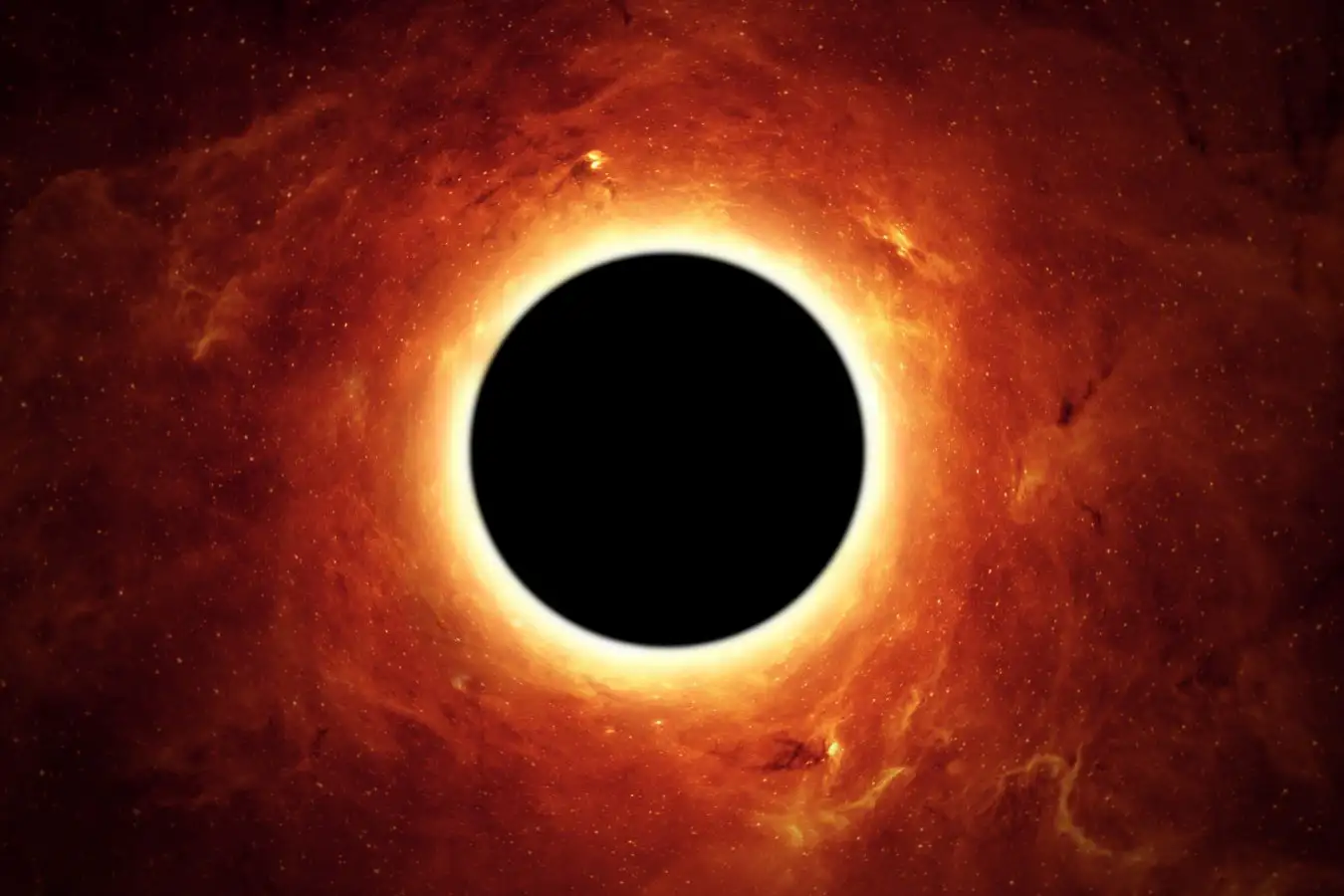
In the vast expanse of the universe, astronomers have once again pushed the boundaries of our understanding of celestial phenomena. Recent groundbreaking research has unveiled the existence of the largest black hole ever observed, boasting a staggering mass equivalent to 36 billion times that of our Sun. This monumental find not only challenges previous notions about black hole sizes but also provides profound insights into the formation and evolution of massive cosmic structures.
Unveiling the Cosmic Behemoth
The discovery was announced by a team of international scientists utilizing advanced telescopes and sophisticated data analysis techniques. According to CNBC TV18, the black hole’s mass is approximately six times larger than the previous record-holder, marking a significant milestone in astrophysics. The research indicates that this black hole resides at the core of a distant galaxy, situated millions of light-years away from Earth. Its immense size is believed to be the result of complex galactic interactions and accretion processes over billions of years.
How Was Such a Massive Black Hole Detected?
- Advanced Radio and Optical Telescopes: Researchers employed top-tier observatories capable of detecting faint signals from distant galaxies, enabling them to analyze the gravitational effects exerted by this black hole.
- Gravitational Lensing: One key method involved observing how the black hole’s gravity bends light from background objects, revealing its extraordinary mass.
- Scaling Relations: By studying the properties of the host galaxy and applying well-established correlations like the M-sigma relation, scientists estimated the black hole’s mass accurately.
Why Is This Discovery Important?
The detection of such an enormous black hole revolutionizes our understanding of supermassive black holes and their growth mechanisms. It raises crucial questions about the limits of black hole sizes and the processes that lead to their formation:
- Galaxy Evolution: Massive black holes influence their host galaxies profoundly, affecting star formation, galactic dynamics, and feedback mechanisms.
- Black Hole Formation Theories: This discovery challenges existing models, prompting scientists to explore alternative pathways, such as direct collapse of massive gas clouds or hierarchical mergers.
- Cosmological Implications: Understanding how such giants formed helps shed light on the early universe and the timeline of cosmic structure formation.
Implications for Future Research
With this landmark discovery, the scientific community is now eager to investigate further:
- Searching for Even Larger Black Holes: Does a physical upper limit exist, or can black holes surpass this size?
- Studying Host Galaxies: What environments foster the growth of such colossal black holes?
- Improving Detection Techniques: Developing more sensitive instruments and methods to uncover similar objects in the distant universe.
Broader Cosmic Context
Much like the recent findings reported by India Today and NDTV, which detail black holes with masses that dwarf our Sun, this new discovery underscores the vast diversity and scale of cosmic phenomena. These black holes serve as natural laboratories for testing the limits of physics, including Einstein’s theory of general relativity and quantum mechanics, under extreme conditions. They also contribute to our broader quest to comprehend the universe’s history, structure, and ultimate fate.
What Does This Mean for Humanity?
The existence of such an enormous black hole is a humbling reminder of the universe’s grandeur and complexity. It inspires scientists to continue exploring the cosmos, expanding our knowledge and curiosity. While black holes like these are far beyond any human reach, understanding their nature enriches our perspective about our place in the universe and the fundamental forces that govern reality.
Conclusion
The revelation of the biggest black hole ever—measuring an astonishing 36 billion times the Sun’s mass—represents a monumental leap in astrophysics. As scientists continue to analyze and understand these celestial giants, they unlock new chapters in the story of the universe, shedding light on the most mysterious and powerful objects known to science.
In the grand scheme of the cosmos, these black holes act as anchors for understanding galactic evolution, the limits of gravity, and the early universe’s conditions. The discovery exemplifies human ingenuity and the relentless pursuit of knowledge, promising even more astonishing revelations in the years to come.
For more updated news please keep visiting Prime News World.








